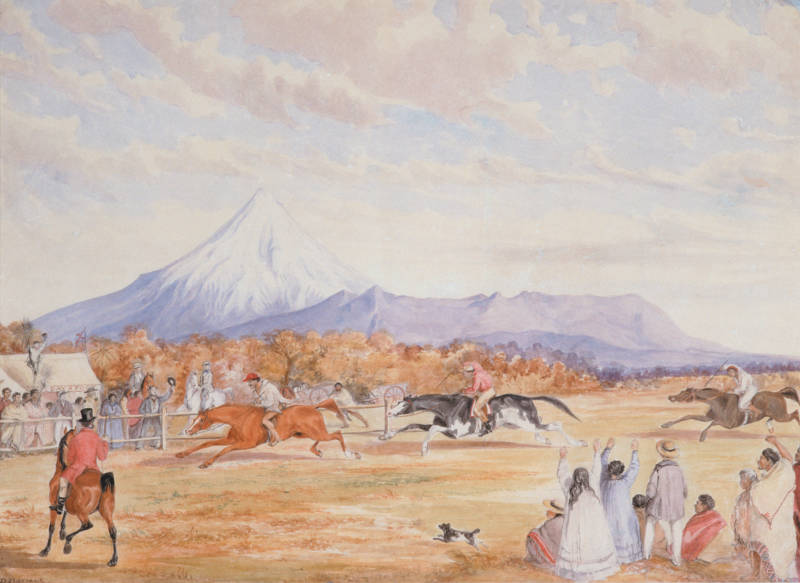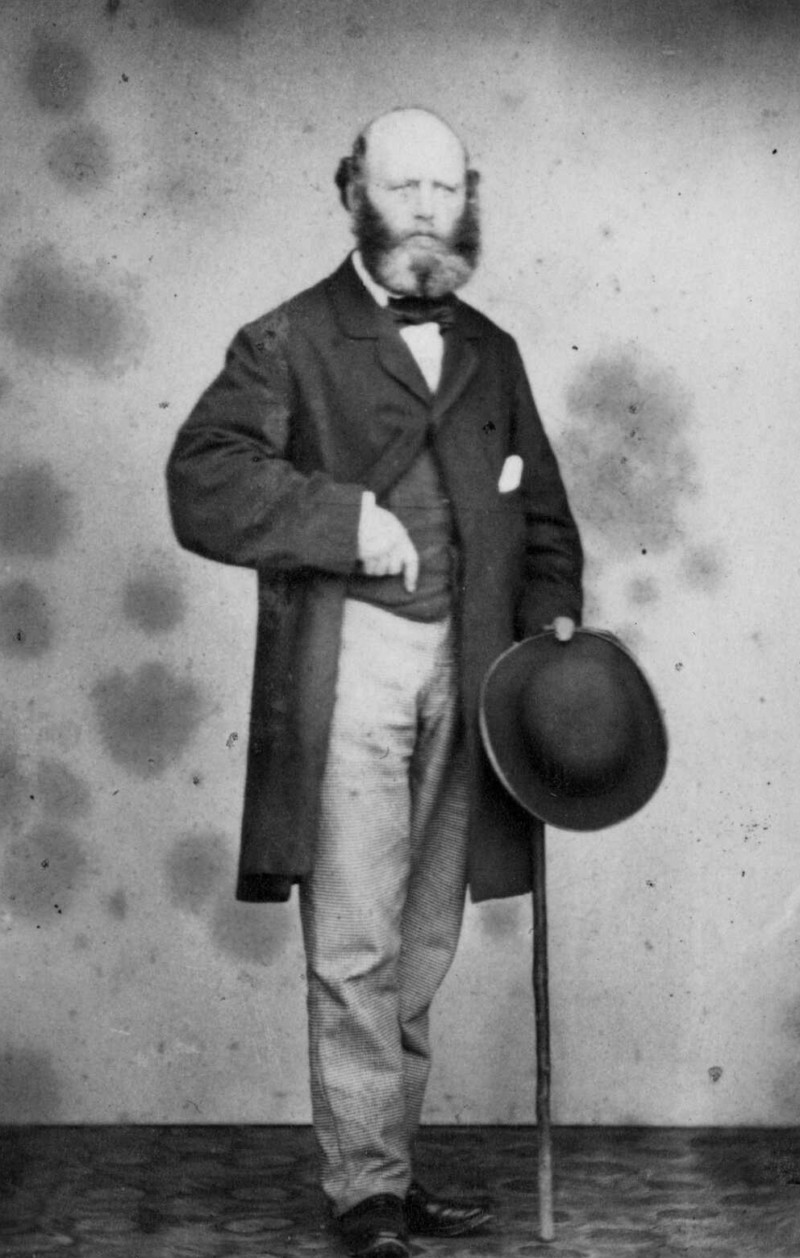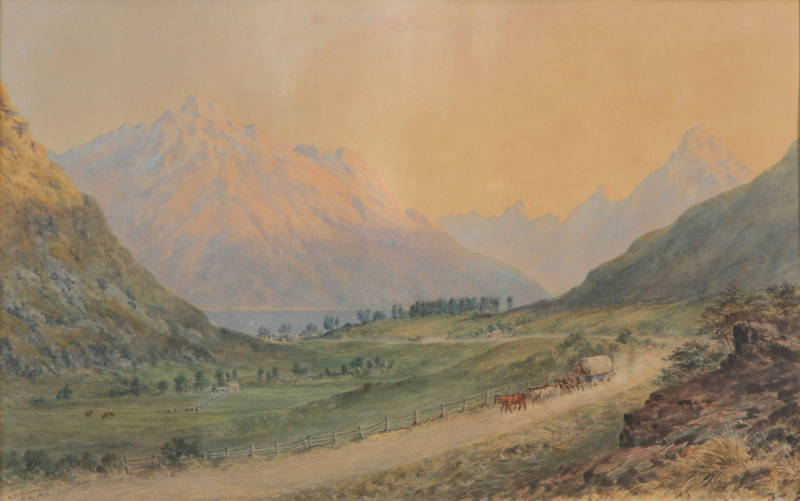


Charles Decimus Barraud arrived in Aotearoa in 1849 and set up in business as a chemist in Te Whanganui-a-Tara. By 1850, he was recorded as a painter and in the ensuing years he exhibited with great popular success, although did not retire from his business until 1887. For the first twenty-six years of his life in New Zealand, he travelled widely throughout the North and South Islands recording his impressions of picturesque scenery in a conventional English romantic manner. He was particularly fond of the atmospheric effects of late afternoon light. He also displayed an ability to represent the period of European settlement with great topographical accuracy.
With J. C. Richmond, Albin Martin, and John Kinder, Barraud is one of New Zealand’s most important colonial artists of the period 1850 to 1880. In 1873, he visited England where he prepared for publication the portfolio of lithographs called New Zealand Graphic and Descriptive, in some cases illustrating photographs taken by his friend Richmond. He became the first President of the New Zealand Academy of Fine Arts in 1889, holding the office until his death. In 1892, he exhibited with the Wellington Art Club a painting of the Rangiātea Church at Ōtaki, which was later reproduced as a lithograph.
A more extensive biography is available on Te Ara The Encyclopedia of New Zealand.
